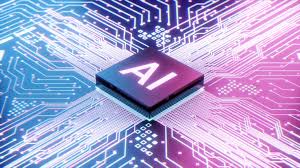
Imagine teaching a robot to make tea. You might instruct it to boil water, pour it into a cup, and add tea leaves. Simple enough—until something unexpected happens: the kettle is missing. What does the robot do? Does it look for another kettle, fetch one from the store, or just stop working? This scenario captures the essence of the Frame Problem—one of the oldest and most enduring puzzles in artificial intelligence.
Machines are exceptional at following rules, but understanding which rules apply and when remains elusive. Context, something humans grasp instinctively, is still the invisible wall that limits true machine intelligence.
The Infinite To-Do List of Intelligence
Think of the Frame Problem as an endless checklist. Every time an AI system takes an action, it must decide what changes in its environment matter and what don’t. For humans, this is automatic—you don’t need to consciously decide that turning off the light won’t affect your morning coffee.
But for machines, every possible effect must be explicitly programmed or inferred. When faced with thousands of potential outcomes, even simple decisions become tangled in computational overload. This makes it difficult for AI to adapt gracefully to unplanned scenarios—like handling sarcasm, interpreting cultural nuances, or adjusting to shifting contexts in real time.
Understanding this challenge is a core part of what learners explore in an artificial intelligence course in Hyderabad, where they examine how machines can better filter relevant from irrelevant information—a skill that mirrors how human cognition operates naturally.
The Missing Context: Why AI Still Misreads the World
Humans live in a world saturated with context. We interpret meaning based not only on what is said but also how and when it’s said. AI, however, sees the world through data points—numbers, tokens, and structured patterns.
For example, a chatbot may understand the sentence, “I’m fine,” but not whether it’s a genuine statement or a frustrated sigh. Facial cues, tone, and cultural context—elements that shape meaning—are often lost in translation.
This lack of contextual awareness is precisely why large language models, recommendation systems, and autonomous agents can still make odd or inappropriate choices. They recognise patterns but rarely understand intent. Researchers are now integrating multimodal learning (combining text, images, and sound) to help machines develop a more holistic sense of context, bridging this critical gap.
Logic vs. Learning: Two Paths to Understanding
There are two major schools of thought on how to overcome the Frame Problem. One argues for better logic—building explicit models of how the world works. The other leans on learning—training AI on vast datasets to infer meaning statistically.
Logic-based systems promise precision but crumble in unpredictable environments. Learning-based systems, on the other hand, adapt through exposure but often lack interpretability—they can tell what works without knowing why.
Striking the right balance between these approaches is one of AI’s grand challenges. This is why students enrolled in an artificial intelligence course in Hyderabad often study both symbolic reasoning and neural learning frameworks, blending classical theories with modern deep learning to design AI that’s both adaptable and explainable.
Contextual Awareness: Teaching Machines to “Notice”
At its core, solving the Frame Problem means teaching AI to notice what matters. This involves giving systems a sense of priority and proportion. Just as a human driver ignores the colour of the clouds but reacts instantly to a pedestrian crossing the road, intelligent systems must learn to assign relevance dynamically.
Advances in attention mechanisms and reinforcement learning are helping AI systems focus their computational energy where it’s most useful. For instance, self-driving cars now use contextual modelling to decide which environmental cues to prioritise—road signs over distant trees, pedestrians over parked cars.
The more AI systems can replicate this human-like selectivity, the closer we move toward machines that truly understand their surroundings rather than just react to them.
Conclusion: The Road to Contextual Intelligence
The Frame Problem reminds us that intelligence is more than logic—it’s awareness, intuition, and the ability to choose what not to consider. Machines are getting closer to bridging this gap, but context remains the final frontier between rule-following systems and genuine understanding.
As artificial intelligence continues to evolve, developing context-sensitive algorithms will be key to unlocking its full potential. For those stepping into this field, mastering these nuances isn’t just about coding smarter systems—it’s about teaching machines to think more like us.
The future of AI won’t be defined by how many problems it can solve, but by how well it understands the world in which those problems exist.


